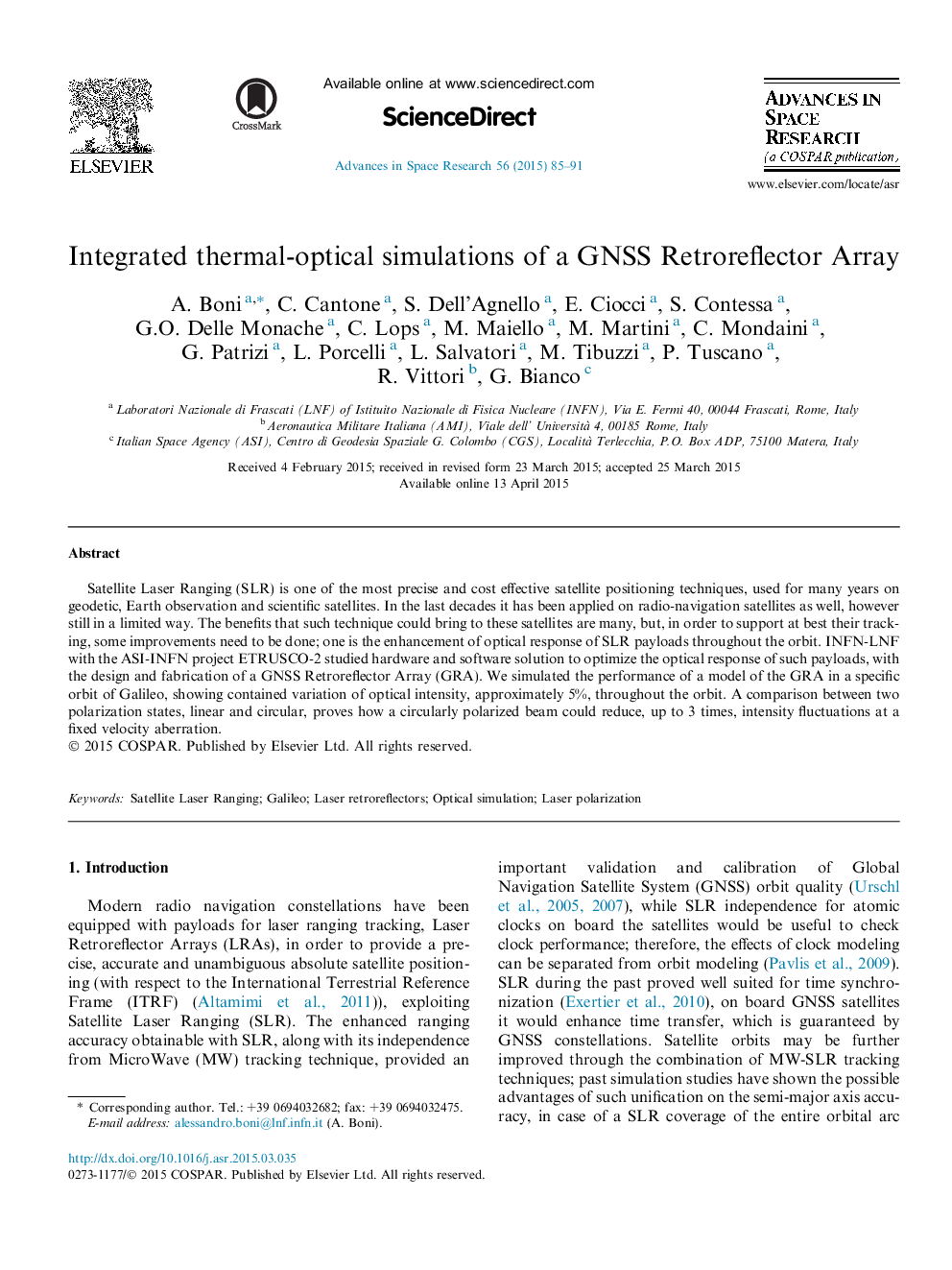| Article ID | Journal | Published Year | Pages | File Type |
|---|---|---|---|---|
| 1763783 | Advances in Space Research | 2015 | 7 Pages |
Abstract
Satellite Laser Ranging (SLR) is one of the most precise and cost effective satellite positioning techniques, used for many years on geodetic, Earth observation and scientific satellites. In the last decades it has been applied on radio-navigation satellites as well, however still in a limited way. The benefits that such technique could bring to these satellites are many, but, in order to support at best their tracking, some improvements need to be done; one is the enhancement of optical response of SLR payloads throughout the orbit. INFN-LNF with the ASI-INFN project ETRUSCO-2 studied hardware and software solution to optimize the optical response of such payloads, with the design and fabrication of a GNSS Retroreflector Array (GRA). We simulated the performance of a model of the GRA in a specific orbit of Galileo, showing contained variation of optical intensity, approximately 5%, throughout the orbit. A comparison between two polarization states, linear and circular, proves how a circularly polarized beam could reduce, up to 3 times, intensity fluctuations at a fixed velocity aberration.
Related Topics
Physical Sciences and Engineering
Earth and Planetary Sciences
Space and Planetary Science
Authors
A. Boni, C. Cantone, S. Dell'Agnello, E. Ciocci, S. Contessa, G.O. Delle Monache, C. Lops, M. Maiello, M. Martini, C. Mondaini, G. Patrizi, L. Porcelli, L. Salvatori, M. Tibuzzi, P. Tuscano, R. Vittori, G. Bianco,
